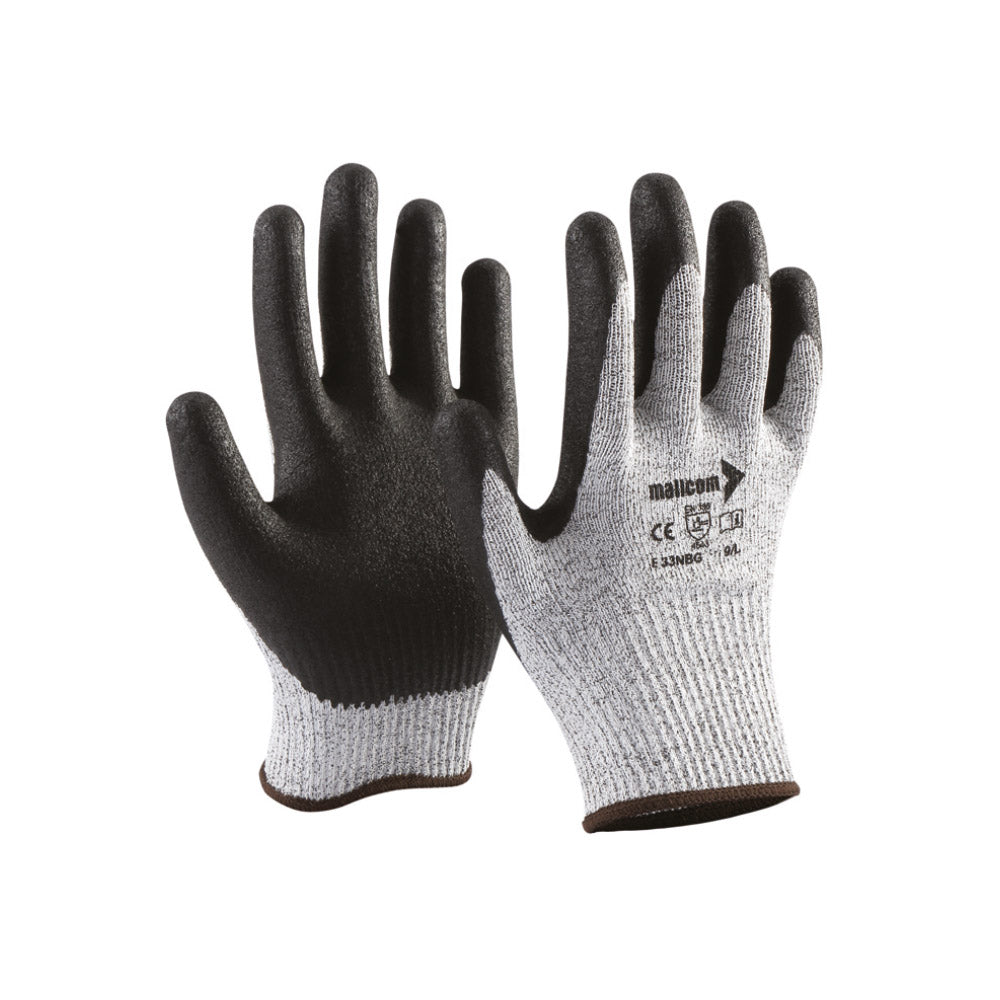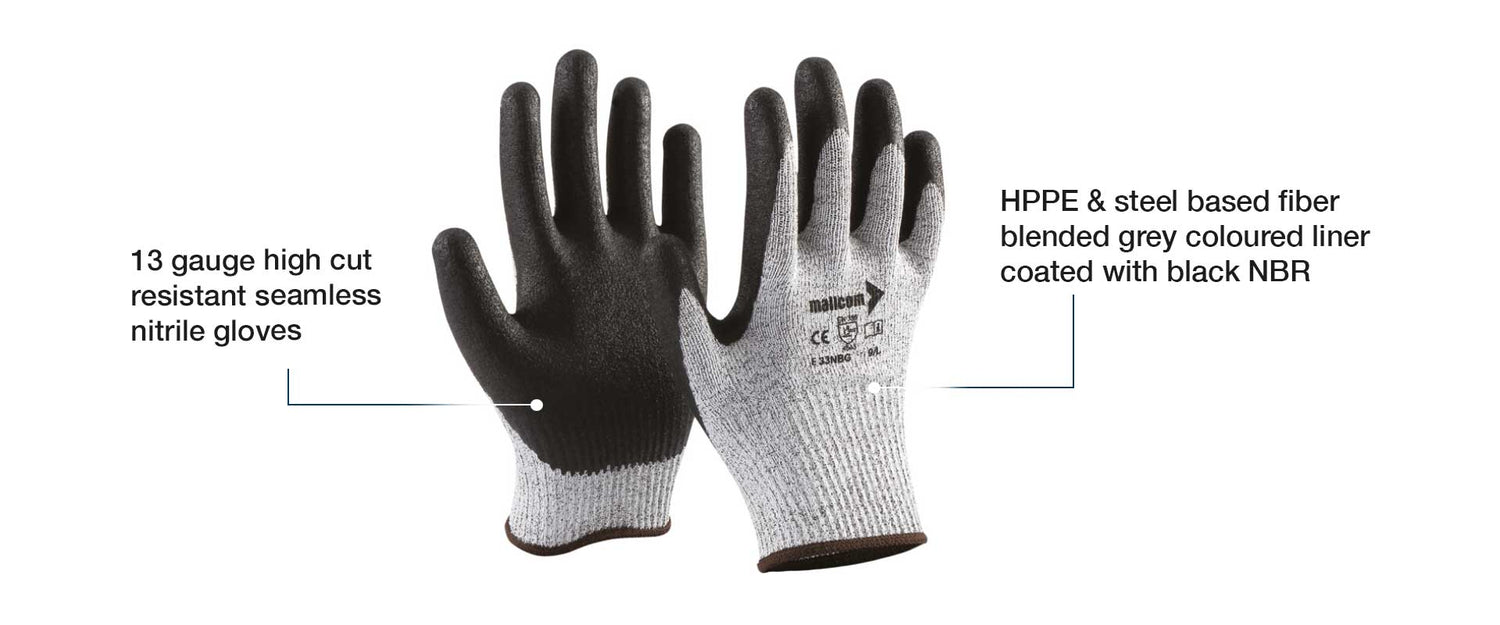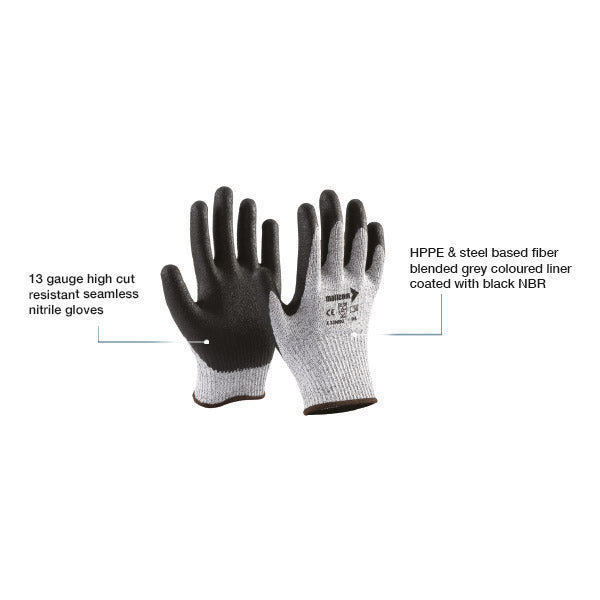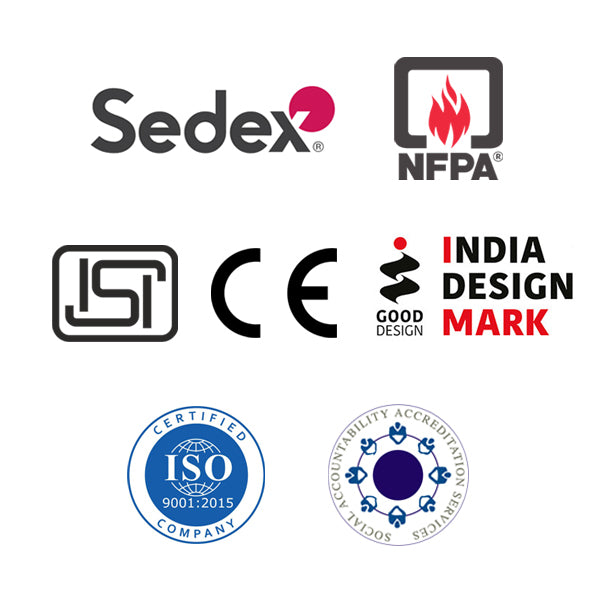E33NBG
Share
Cut Resistant Nitrile Gloves
-
Cut resistant seamless NBR coated glove.
- 13G HPPE & steel blended liner.
- Black palm sandy finish over grey shell.
- Cut level D
ABRASION
TEAR RESISTANT
CUT RESISTANT
Select Size
E33NBG

Size Chart
How to Measure
E33NBG

E33NBG

EN 388:2016+A1:2018
Delivery & Services

Easy Return
with our 15 days return poicy
Regular price
Rs. 0
Sale price
Rs. 0
Regular price
Tax included.

ABOUT THE DESIGN

USEFUL IN THESE INDUSTRIES
AUTOMOBILE
GLASS & CERAMIC
LOGISTICS
HEAVY ENGINEERING
MANUFACTURING

Product Features
ABOUT THE DESIGN

USEFUL IN THESE INDUSTRIES
AUTOMOBILE
GLASS & CERAMIC
LOGISTICS
HEAVY ENGINEERING
MANUFACTURING
Product Details
























